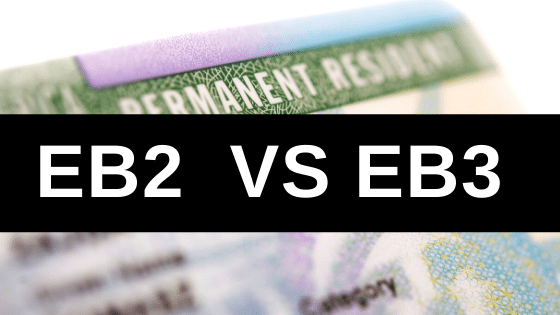In 2019, nearly 45 million immigrants lived in the United States, the highest number ever recorded in a census. That means that 13.7 percent of the American population are immigrants.
While there is no doubt that many foreign nationals choose to move to the United States, most people are unaware of the complicated immigration process. So, if you would like to move to the United States for work, the best thing you can do is educate yourself about the different types of green cards!
This post will focus on skilled labor green cards and compare the EB-2 vs. EB-3, two of the most popular employment visas. So stick around to see the differences between them and the requirements to apply for each!
EB-2 Visa
The EB-2 green card is for individuals with exceptional ability in their line of work, so the requirements are quite difficult to meet. Nevertheless, if you are a working professional, you can get a green card if you have a:
- Master’s or doctorate
- Bachelor’s degree and five years relevant work experience
Moreover, you will need a formal job offer from an employer to apply unless you are eligible for a national interest waiver. However, this is reserved for those whose work would greatly serve the nation due to their exceptional qualifications.
One of the EB-2 visa benefits is that you can expedite the decision by using premium processing. And, if you have dependents, such as a spouse or children up to 21 years old, you can also arrange for their green cards.
EB-3 Visa
If you don’t have the circumstances to apply for an EB-2, don’t worry! The EB-3 is more accessible, as you can apply under several subcategories. These include:
- EB-3A: Skilled worker with at least two years of training or experience
- EB-3B: Professionals whose job requires at least a bachelor’s degree
- EB-3C: Other individuals with less than two years of experience in their field
Of course, to apply for the EB-3 green card, you will need a formal job offer. Nevertheless, you don’t always need a degree unless you file as a professional (EB-3B visa).
Just like the EB-2 visa, you can usually use premium processing and get green cards for dependents.
Moreover, after a few years of working with your petitioning employer, you can change employers and jobs if you desire.
Of course, there is a backlog of candidates waiting for their petitions to be resolved, so you will likely face long processing times. Thus, it is best to work with an experienced lawyer, such as Graham Adair, who understands the process.
Get the Assistance You Need to Choose Between EB-2 vs. EB-3 Visas
After comparing the EB-2 vs. EB-3 work visas, you likely have a better idea of which one is right for you. Remember to work with immigration professionals for faster results. And with luck, you’ll be on the road to your new life in the United States!
If this information helped you, check out more of the immigration and law advice on our website!
